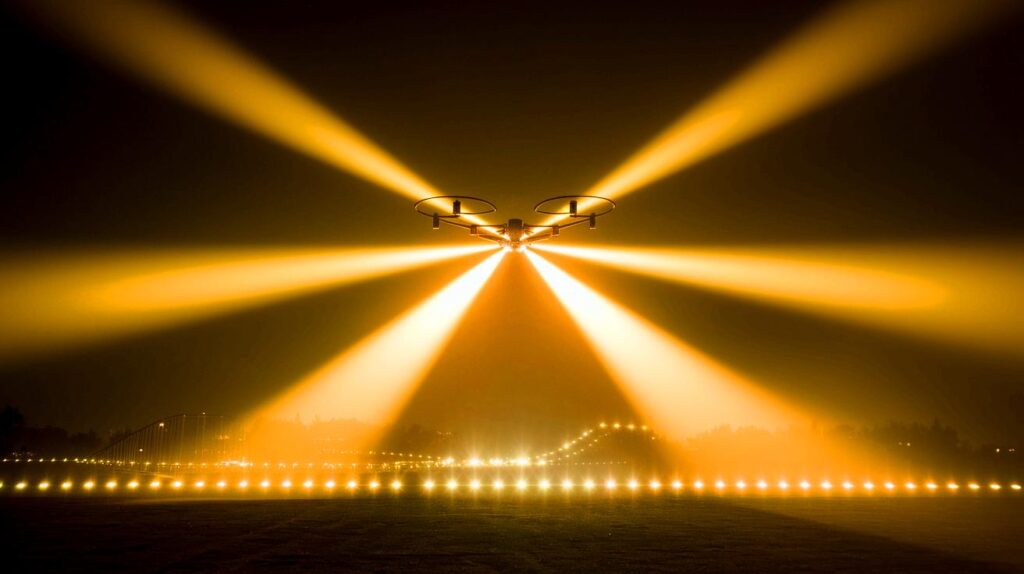| IN BRIEF |
|
Technology continues to evolve at a rapid pace, and one of the most recent innovations garnering attention is the “Flying Sun 1000” drone. Designed to revolutionize nighttime operations, this drone offers a groundbreaking aerial lighting solution with its impressive luminous capacity of 300,000 lumens. Developed by Freefly Systems, based in Washington, this system is built around the Alta X quadcopter. This heavy-duty drone can literally transform night into day, potentially changing the game for many professional sectors.
The impact of 288 LEDs for dazzling brightness
The “Flying Sun 1000” stands out with its array of 288 LEDs aimed downwards, spread across four distinct panels. Each panel contains 72 lights, creating a beam of 300,000 lumens that illuminates through a 60-degree projector. This light beam is powerful enough to brighten the darkest nighttime outdoor operations. For instance, at an altitude of 30.5 meters, the drone illuminates approximately 1,301 square meters with an intensity of 10 foot-candles. At 96 meters, the coverage expands to 12,728 square meters, although the light intensity decreases to 1 foot-candle. Additionally, Freefly engineers have integrated an ingenious cooling system that uses the drone’s rotors to prevent LED overheating, thereby extending their lifespan to several thousand hours.
Battery or cable powered for infinite light
The Alta X drone, serving as the foundation for the “Flying Sun 1000,” has a flight time of 20 to 50 minutes thanks to its 16 Ah lithium-ion batteries. However, the energy requirements of the lighting system are so significant that it can only operate at full brightness for 5 to 10 minutes on battery. The real innovation lies in the drone’s ability to be powered by an external cable, such as a portable generator or even an electric vehicle, allowing it to hover indefinitely. This feature is crucial for prolonged rescue missions or night repair work in hard-to-reach areas where traditional lighting towers cannot be deployed.
Alta X: A robust platform
The framework of the “Flying Sun 1000” relies on Freefly’s Alta X quadcopter, known for its 15 kg payload capacity. Equipped with folding propellers and vibration-dampening technology, the Alta X is both compact and quick to deploy, able to be set up in just a few minutes by a single operator. The downward-facing LED panels provide a diffused light source, minimizing harsh reflections and exaggerated shadows from ground projectors. This aerial configuration simplifies tasks such as construction, roadside assistance, and infrastructure assessments.
Pricing and production
The system is primarily intended for commercial and governmental operations, priced at $59,995. A reduced version, the “Flying Sun 500,” is available for $49,995, although it produces less brightness. Freefly manufactures about ten “Flying Sun 1000” kits per month, with deliveries expected starting in June. While expensive compared to traditional worksite lighting, the mobility and extensive aerial coverage of the drone may justify this investment for critical situations.
This innovation could transform nighttime interventions by providing a versatile and mobile aerial lighting solution. Whether illuminating a rescue site or securing a construction perimeter, the “Flying Sun 1000” offers an all-in-one solution capable of navigating any terrain. With its rapid deployment and adaptability to different power sources, this drone may well become a standard tool for rescue teams and heavy industries. Is the future of nighttime lighting now dependent on drones?







